I'm visualizing stock data, with the x-axis representing time and y-axis representing money. Now if a stock gains on value (because the share is more worth) the corresponding line moves up:

But how can I visualize transactions during time? Say I buy more shares throughout time, the graph shows a significant rise not caused by a well performing stock, but rather caused by the number of shares doubling:

Now I know technically, the graph is correct, but if I want to analyze stock performance the graph becomes useless as significant rises have no correspondence to actual performance.